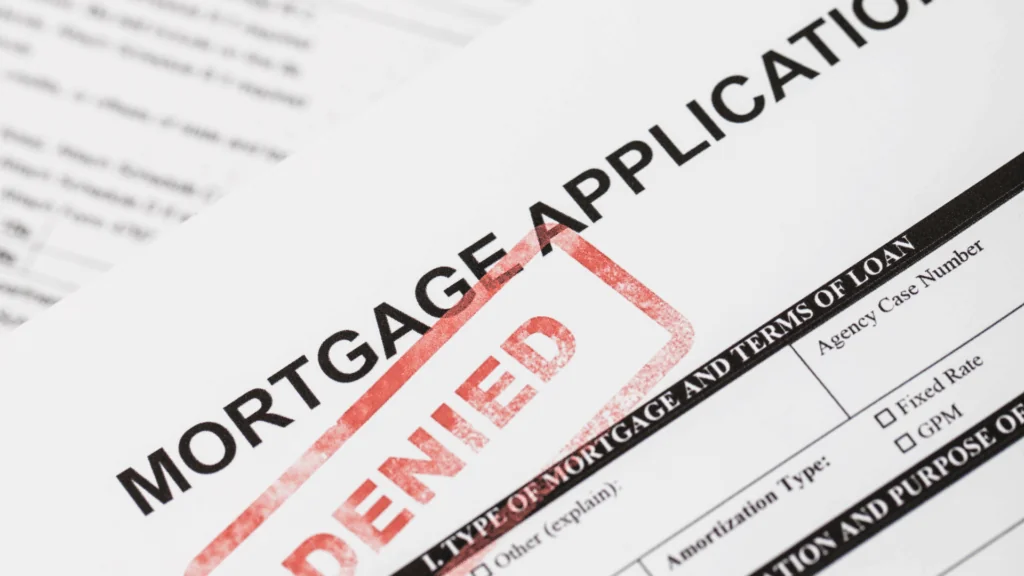Mortgage Retention Explained: A Quick Guide

Buying a home in the UK? You might encounter a hurdle called mortgage retention. It’s when your lender holds back part of your mortgage funds, and it can throw a spanner in the works of your property purchase.
Why does this happen? What does it mean for you? And most importantly, how can you handle it?
If these questions are racing through your mind, this guide can help.
We covered what mortgage retention is, why it happens, and how you can navigate it.
Whether you’re a first-time buyer or an experienced investor, understanding this aspect of mortgages is important.
Let’s get started.
What Is Mortgage Retention?
Mortgage retention occurs when a lender decides not to release the full mortgage amount upfront. Instead, they hold back a portion of the funds until certain conditions are met.
This usually happens when a surveyor identifies essential work that needs to be done on the property to bring it up to the expected standard or value.
How Does Mortgage Retention Work?
Let’s break down the mortgage retention process to give you a clearer picture of what to expect if you find yourself in this situation.
When you apply for a mortgage, the lender will typically arrange a valuation survey of the property.
If the surveyor spots significant issues that need addressing, they’ll report this to the lender. Based on this report, the lender might decide to impose a retention.
For example, let’s say you’re buying a house for £200,000 and you need a mortgage of £180,000. The surveyor identifies £10,000 worth of essential repairs.
The lender might then offer you £170,000 initially, holding back the remaining £10,000 until the work is completed.
Once you’ve carried out the necessary improvements, you’ll need to provide evidence to the lender.
This could be in the form of invoices, receipts, or even a follow-up inspection. If the lender is satisfied, they’ll release the retained funds to you.
It’s important to note that you’ll still need to pay the full purchase price to the seller at completion.
This means you’ll need to find a way to cover the retained amount in the short term, which can be a significant challenge for many buyers.
Image showing how mortgage retention works
What Can Trigger A Mortgage Retention?
You might be wondering what kinds of issues can lead to a mortgage retention.
While every lender has their own criteria, there are some common culprits that often crop up:
- Damp and mould. This is one of the most frequent reasons for retention. Lenders are particularly wary of damp issues as they can indicate more serious structural problems.
- Structural defects. Any issues with the building’s integrity, such as subsidence or major cracks, are likely to raise red flags.
- Electrical problems. Outdated or faulty wiring can be a major safety concern and often needs addressing before a lender will release full funds.
- Roof repairs. A damaged or ageing roof can lead to numerous other issues, so lenders often want to see these fixed.
- Central heating and boiler issues. An inefficient or broken heating system can significantly impact a property’s value and livability.
- Japanese knotweed. This invasive plant can cause serious damage to buildings and is a common cause for concern among lenders.
- Asbestos. While not always immediately dangerous, the presence of asbestos can be a major issue that lenders want addressed.
It’s worth noting that minor cosmetic issues or small repairs are unlikely to trigger a retention.
Lenders are primarily concerned with problems that could significantly affect the property’s value or safety.
Image showing all the issues that triggers a mortgage retention
What Are Your Options If Faced With Mortgage Retention?
If you find yourself in a situation where a lender is proposing mortgage retention, you have several options to consider:
- Accept the retention. If you’re comfortable with the lender’s terms and have the means to cover the shortfall and carry out the work, you can proceed with the purchase. Remember, you’ll need to fund the repairs yourself before the retained amount is released.
- Negotiate with the seller. You could try to renegotiate the purchase price based on the survey findings. The seller might agree to a lower price or offer to complete the work themselves before the sale.
- Find alternative funding. If you’re set on the property but can’t cover the retention, you might consider other funding options like personal loans or credit cards. However, be cautious about taking on additional debt.
- Seek a different lender. Not all lenders have the same policies. You might find another lender who’s willing to offer the full amount without retention.
- Walk away. If the issues are too significant or you can’t find a workable solution, it might be best to withdraw from the purchase. While you’ll lose some upfront costs, it could save you from a potentially costly mistake.
Each option has its pros and cons, and the best choice will depend on your circumstances, financial situation, and the specifics of the property in question.
Image showing all the options when faced with mortgage retention
How Can You Avoid Mortgage Retention?
While you can’t always prevent mortgage retention, there are steps you can take to reduce the likelihood of it happening:
- Get a full structural survey. This is more comprehensive than a basic valuation and can highlight potential issues early on. It might cost more upfront, but it could save you from nasty surprises later.
- Do your homework. Before making an offer, try to gather as much information about the property as possible. Ask the seller about any known issues or recent repairs.
- Budget for potential work. When saving for your deposit and other costs, try to set aside some extra funds for possible repairs. This can give you more flexibility if retention does occur.
- Choose your property carefully. If you’re risk-averse, you might want to focus on newer properties or those that have been recently renovated, as they’re less likely to have significant issues.
- Work with an experienced mortgage broker. They can help guide you towards lenders who might be more flexible or have different policies regarding retention.
Remember, while these steps can help, they don’t guarantee you’ll avoid retention. It’s always best to be prepared for the possibility.
What If The Lender Imposes 100% Retention?
In some rare cases, a lender might impose 100% retention. This means they’re not willing to release any funds until certain conditions are met.
It’s an extreme measure usually reserved for properties with severe defects or those deemed uninhabitable in their current state.
If you’re faced with 100% retention, your options are limited. You could try to negotiate with the seller to have them complete the necessary work before the sale, or you might need to consider withdrawing from the purchase altogether.
In these situations, it’s crucial to seek professional advice. A mortgage broker or solicitor can help you understand your options and the potential risks involved in proceeding with the purchase.

The Bottom Line
Mortgages being retained by lenders shouldn’t derail your property purchase.
Understanding what mortgage retention is, why it happens, and how to navigate it will equip you to tackle this challenge if you encounter it.
Remember, buying a property is a big investment, and retention is ultimately a safeguard for both you and the lender.
A good mortgage broker can be an invaluable ally in dealing with retention issues. They can find flexible lenders, explain your options, negotiate better terms, and provide market insights.
With their expertise, you’ll be well-prepared and supported throughout your property purchase, making the process as smooth and stress-free as possible.
Need the right broker? Get in touch. We’ll connect you with a qualified mortgage broker who can guide you through the process and ensure you have the best advice and support.
Get Matched With Your Dream Mortgage Advisor...

Frequently asked questions
What is a mortgage retainer?
Mortgage retention (also called a mortgage retainer) happens when a lender holds back some of your mortgage money until certain things are done.
This usually occurs if the lender thinks the property might be worth less than expected due to problems like repairs needed or building work not finished.
The lender will only release the held-back money once these conditions are met. This helps to protect the value of the property and ensures the lender gets their money back.
What happens after the retention period?
After the retention period, the lender will release the withheld funds if everything checks out.
This typically means a re-inspection or receiving proof that any problems that led to the hold-up have been fixed to their satisfaction.
Once they’re happy, the money is sent directly to you or your solicitor, allowing you to complete your property transaction without a hitch.
But, if the conditions aren’t met, the funds stay on hold, which could put your purchase or refinance at risk.
This article has been fact checked
This article was created, checked, and verified by the expert team at Money Saving Guru. Trust us, you’re in good hands.




